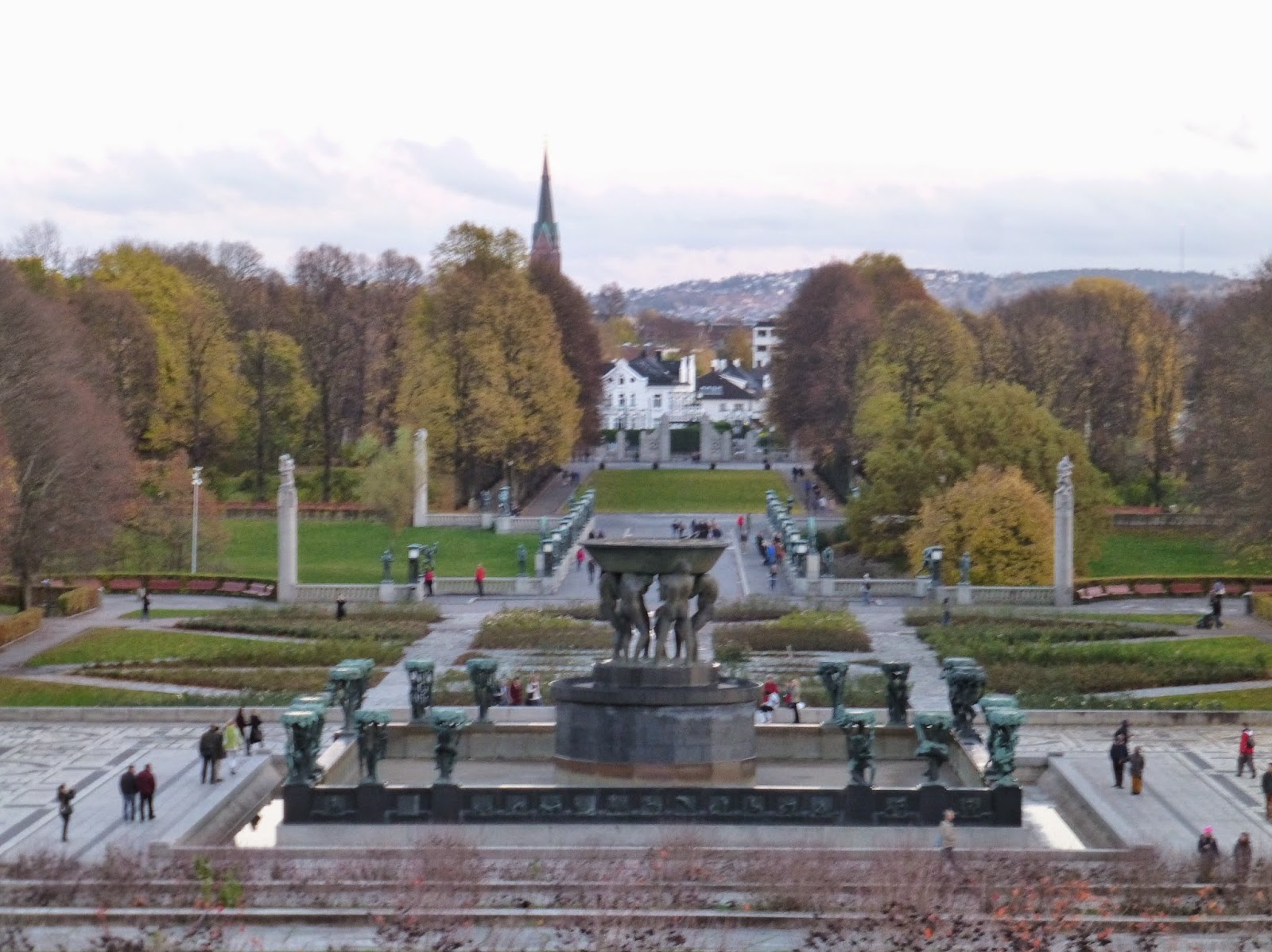 Oslo
Oslo is over 1,000 years old. It is the capital of
Norway and with a population over 634,000 it is the largest city. The Oslo metro area is home to over 1.5 million people.
.jpg)
Oslo sits on the Oslofjord which is a 120 km (78 mile) long lake. There's lots of nature here. There are 40 islands and 343 lakes within the city limits.

Oslo was founded in 1048 by King Harald Hardåde. During the union with
Denmark the city was renamed Christiania after the Danish King Christian IV. In 1877 it became Kristiania until after Norway gained independence. In 1925 the city became Oslo again.
.jpg) |
| University of Oslo |
In 2012 Oslo was ranked #1 for quality of life among large European cities. However it is one of the most expensive cities in the world. In 2011 it was the #2 most expensive city after Tokyo. In 2013, it tied with
Melbourne,
Australia as the #4 most expensive city in the world.
.jpg) |
| Slottet |
Det Kongelige Slott is the Royal Palace. The 173 room palace was completed in 1849 and is the official residence of the Norwegian monarch.
.jpg) |
| St. Olav's Cathedral |
St. Olav's Cathedral was consecrated in 1896. It is the Roman Catholic cathedral in Oslo.
.jpg) |
| Stortinget |
Since 1866, Stortinget has been the Norwegian parliament building in central Oslo.
.jpg) Trefoldighetskirken
Trefoldighetskirken is the Church of the Holy Trinity. The red brick church belongs to the Church of Norway. It was consecrated in 1858 and is one of Oslo's largest churches.
.jpg) |
| Nationaltheatret |
The National Theater was built in 1899 and is the country's largest theater.
.jpg) |
| Domkirke |
The Oslo Cathedral is the main church for the Church of Norway. The church was consecrated in 1697.
.jpg) |
| Akershus Festning |
Akershus Fortress is an Oslo castle that was built in the 1290s. It was built to protect the city and has also been used as a prison.
.jpg) |
| Holmenkollen ski jump |
.jpg) |
| Børsen |
Oslo Børs was founded in 1819. It is the only independent stock exchange within the
Nordic countries.
.jpg) |
| Opera House |
The Opera House opened in 2008. The exterior is covered with Italian marble and white granite. It looks like it is rising from the Oslofjord. You can walk up on the roof and it's a great place to watch the sunrise.
.jpg) |
| Frognerparken |
At 45 hectares (111 acres),
Frogner Park is Norway's biggest park and is home to 212 bronze and granite sculptures by Gustav Vigeland.
.jpg)
The Fram Museum is a ferry ride away at Bygdøy. It opened in 1936 and is dedicated to the Arctic and Antarctic exploration of the
Fram which launched in 1892. The ship sailed further north and further south than any other wooden ship. The Fram is preserved inside and it is possible to walk through it. The museum is also home to the
Gjøa which was the first ship to sail through the Northwest Passage.
.jpg) |
| Oslo rådhus |
Construction on the Oslo City Hall began in 1931 but was delayed because of WWII. The building opened in 1950. Every December 10th, this is where the Nobel Peace Prize is awarded.
.jpg) |
| Nobel Peace Centre |
The Nobel Peace Center opened in 2005 to mark Norway's 100th year of independence. The center is home to permanent exhibition about every winner of the Nobel Peace Prize.
 |
| National Gallery |
One of the cool things about living in Europe is getting to see original masterpieces instead of just prints. The National Gallery is home to Edvard Munch's
The Scream.
Here's a Rick Steves video about Oslo that I found on YouTube.
©Rick Steves
 Yesterday the Czech President awarded Sir Nicholas Winton with the Order of the White Lion (Class I) at a special ceremony at Prague Castle. He is 105 years old and the Czechs sent a special plane to bring him to the ceremony.
Yesterday the Czech President awarded Sir Nicholas Winton with the Order of the White Lion (Class I) at a special ceremony at Prague Castle. He is 105 years old and the Czechs sent a special plane to bring him to the ceremony.






















.jpg)

.jpg)
.jpg)
.jpg)
.jpg)
.jpg)
.jpg)
.jpg)
.jpg)
.jpg)
.jpg)
.jpg)
.jpg)
.jpg)
.jpg)
.jpg)








































